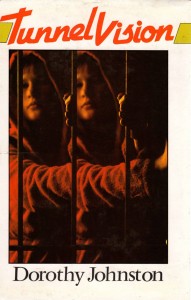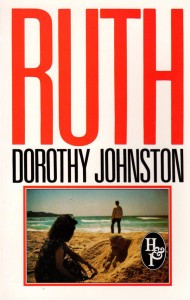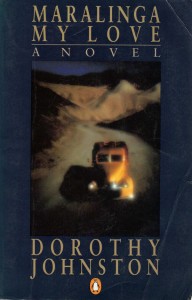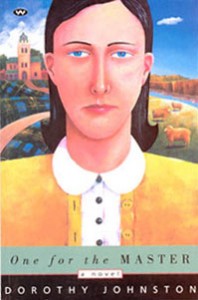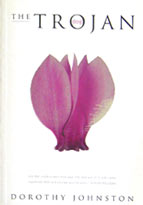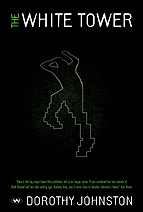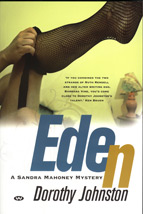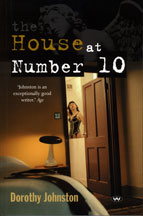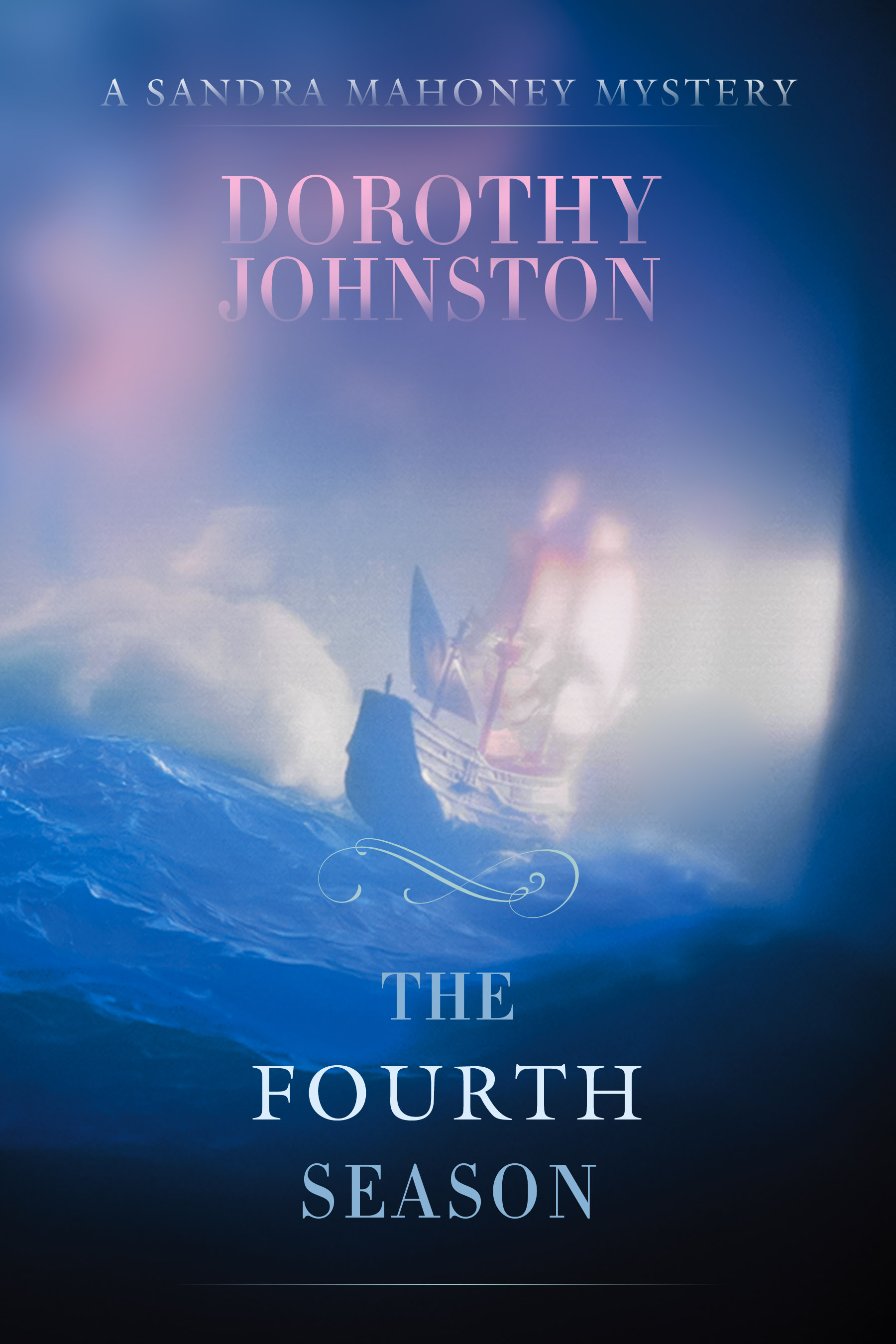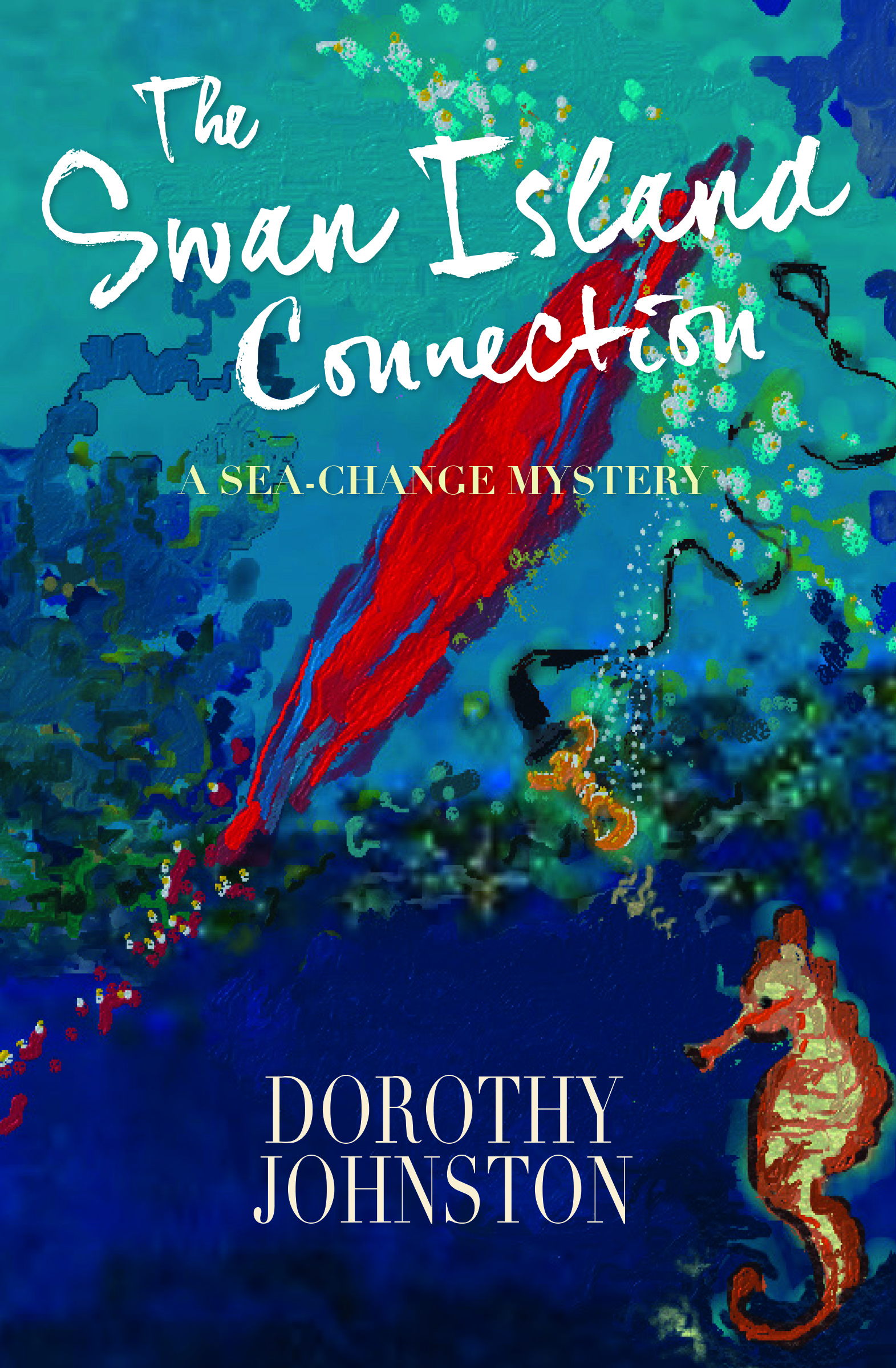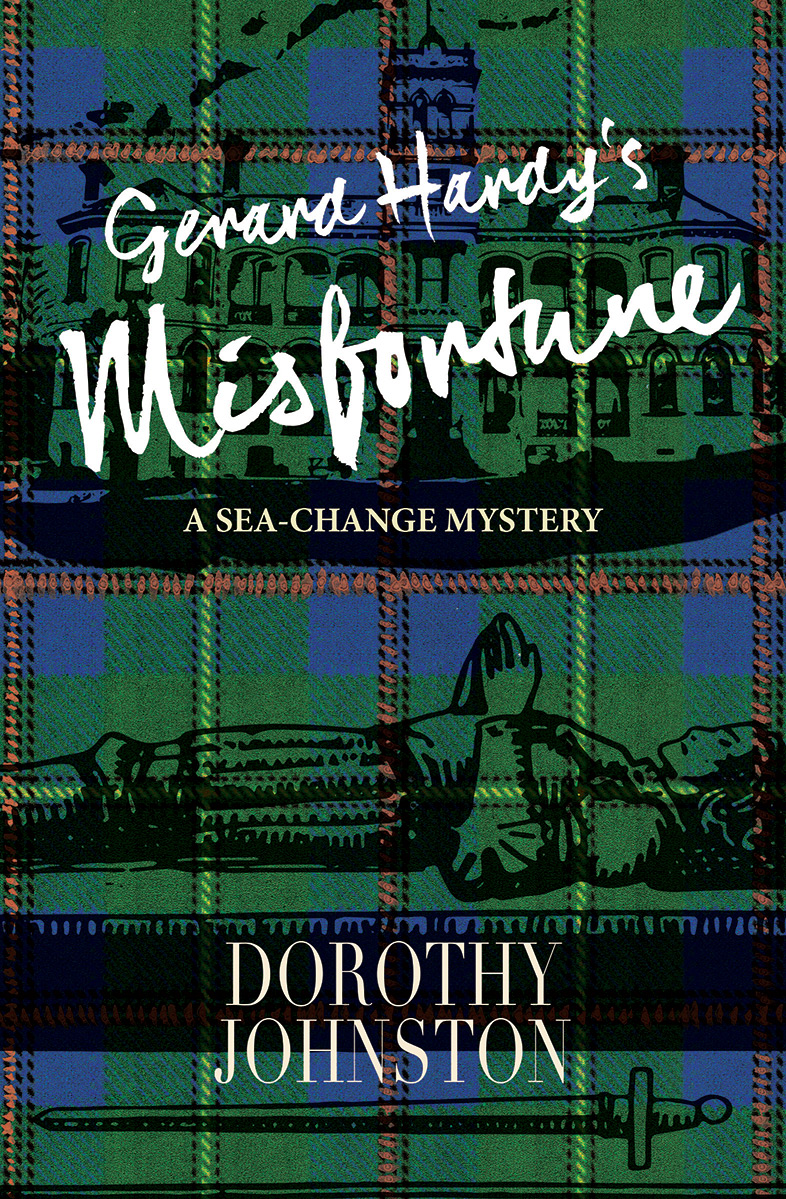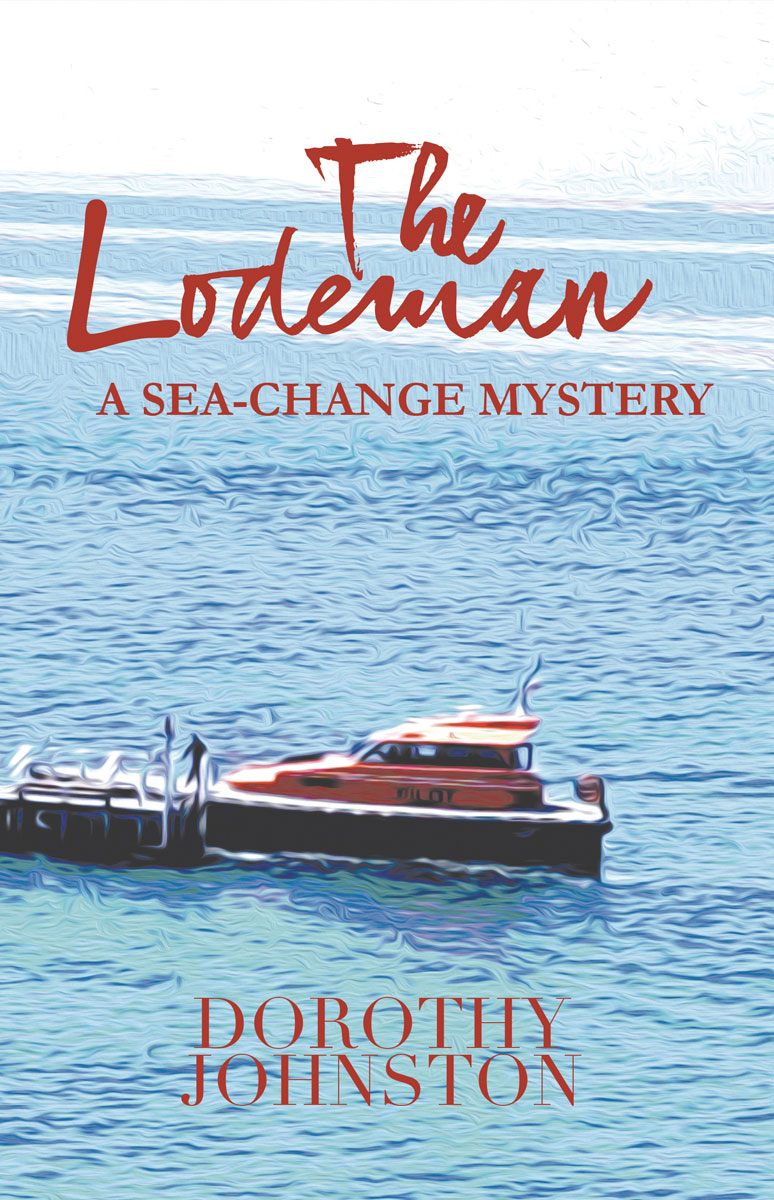‘Disturbing Undertones’ was first published in The Griffith Review, Autumn 2007
Australian fiction writers have, until the last few decades, avoided settling in Canberra and writing about the city in their novels and short stories. In Wild Weeds and Wind Flowers, Ric Throssell’s biography of his mother, Katharine Susannah Prichard, he notes her comment that the national capital was “like a town made by Pinocchio. All that neatness and prettiness, so far removed from the struggle for existence.” Historian Keith Hancock recalled his impressions of returning after an absence in his autobiography Country and Calling. “Canberra, now that I saw it again, both irritated and charmed me. Charles Hawker used to say that it was a good sheep station spoiled.”
The same put-down has been repeated in countless clichés since, from “soul-less city” to Prime Minister John Howard’s air of surprise as he remarked, after the 2003 bushfires that killed four people, injured several hundred and destroyed 491 homes, that Canberrans were reacting just like other “normal” Australians to their loss.
The point – whether made subtly or not – is that, while Canberra may possess certain physical attractions such as clean streets, plenty of trees, jobs in the public service and a lack of congestion, the city will somehow forever remain a stranger to passion and grief; that matters which fully engage the human heart will be shed at its borders – like a coat, if hearts were worn on sleeves, but more like an emptying of the spirit and a form of voluntary evisceration. This activity, leading to a kind of death, spells death also to the creative imagination.
The first published novel set in Canberra, Plaque with Laurel by M. Barnard Eldershaw – the pen name of Marjorie Barnard and Flora Eldershaw – first appeared in 1937. There is an irony and aptness in Plaque with Laurel being about a writers’ conference, whose characters converge from elsewhere (mainly Sydney) and return to other, more interesting and absorbing places at the story’s end.
T.A.G. Hungerford’s Riverslake , set in a workers’ hostel, was published in 1953, then there is another long gap before Robert Macklin’s The Paper Castle in 1977. In 1981, Blanche d’Alpuget’s The Turtle Beach followed Macklin’s example of combining various Asian settings with a Canberra base, and ushered in two decades during which prose fiction has flourished.
Clichés and misconceptions have not lost their force. During his decade as Prime Minister, John Howard has steadfastly refused to live in the Lodge. A ubiquitous form of synecdoche in which “Canberra” elides to “Federal Parliament” – as in “Canberra decides”, “Canberra to blame” – makes it harder for anybody living outside to understand the place as a collection of citizens, or even to want to. Canberrans enjoy high incomes and education levels relative to the rest of the country. Over 63 per cent voted “yes” in the republic referendum, by far the highest percentage of any state or territory, and we consistently vote Labor in federal elections.
The Griffin Legacy Plan, which advocates returning to Walter Burley Griffin’s 1918 blueprint as a guide to Canberra’s development over the next thirty years, was unveiled by the National Capital Authority in 2004. If the plan is followed, a “curving sea” of buildings will accommodate an additional 60,000 people in central Canberra. An unspoken question behind this plan, as with all previous ones, is how the affected citizens will live up to it. It’s between the grandeur of the democratic vision and the human falling back – perhaps falling back right inside the earth – that the idea of the Gothic is born.
| W |
hen I moved from Melbourne to Canberra in the late 1970s, I’d published the odd poem and short story, but nothing substantial. I was working on a novel. I moved because my partner was offered a job in the press gallery and I worried, among other things, about whether I’d be able to write fiction in Canberra, what I would write about – whether my imagination was stuck somewhere in Victoria and, if not, how much of it might be transportable.
It wasn’t until several years later, when my son became very ill, and spent time in the infectious diseases ward of the old Canberra Hospital, that I was able to answer part of this question for myself. A child lying near to death in a hospital above an artificial lake led to my first story about Canberra, “The Boatman of Lake Burley Griffin”. It’s a short piece in which the lake takes on an undertone of the River Styx, the boatman unable to find his way across.
Our lake was flooded in 1963, drowning a farmhouse, sheep paddocks and racetrack. At the centre of the city said to have no centre, the lake seemed to me then – as it has often since – an instance of the gap, or hole, between nature and culture. In those terrifying days, it was also an unnavigable passage between life and death.
It is gaps, disjunctures, edges that don’t fit that have come to interest me most in this city where I’ve lived now for more than a quarter of a century. And in those gaps, what can – and sometimes inspiringly does – grow up is a form of theatre, a parody of public faces and publicly acceptable facades.
The best known of these is the Aboriginal Tent Embassy. First erected in 1972, in protest against the McMahon government’s refusal to recognise indigenous land rights, the tent embassy has achieved an almost permanent presence on the lawns opposite Old Parliament House, though a proposal for its replacement by an “education” building is being considered as I write.
The term “embassy” implies a sovereign state, yet this one has been condemned as an “eyesore”, “disturbing undertone”, “blight on the national capital” and “a squalid slum that should be removed”. The embassy has made good use of Canberra’s physical and political landscape: the nearby streets lined with luxurious embassies in Red Hill and Yarralumla have given the symbols of tents, Aboriginal flag and sacred fire an added potency. For over three decades, it has asserted its provocative status, a thorn in the side of successive governments. It has been forcibly and violently removed, only to return with greater strength. It has been listed on the National Estate by the Australian Heritage Commission. Funeral and wedding ceremonies have been held there. A long and honourable tradition of protest in front of the Parliament has been maintained.
This tradition was changed fundamentally by the move up, and into, Capital Hill. The new Parliament House, in spite of the planners’ and architects’ intentions, has turned out to be a much more effective fortress than the old one ever was. Soon after arriving in Canberra, I took part in a demonstration inside Kings Hall, against budget cuts to women’s refuges. We banged garbage bin lids and made a nuisance of ourselves. Kings Hall in the Old Parliament House was a genuine meeting place. Paths crossed between the chambers; members from opposing sides were brought together. The public was allowed to mingle. The Members’ Hall at the centre of the new building is a pale replica. It is just a crossing space between the chambers, closed to the public, who must content themselves with looking down on their politicians from an upper level.
Our Parliament is even more of a fortress now, with bollards and prohibitions against walking on the roof. Yet demonstrations still occur on the lawns outside – huge, imaginative demonstrations, like the Sea of Hands, made huge to correspond with the long, green, undulating space. Gigantism and parody effectively evolved.
| I |
n 1988, the ACT achieved self-government. Our fourteen-member Legislative Assembly and successive chief ministers, Labor and Liberal, have caused headaches for federal governments and the National Capital Authority. Legislation decriminalising marijuana and prostitution was quickly passed, and bans were removed on X-rated videos and magazines so that Canberra became a centre for the distribution of pornography. Assembly debates from this period make interesting reading, for the arguments back and forth over the image the capital ought to project and confusion about the purpose of its citizens. A kind of up-yours attitude has developed under the big foot of the Commonwealth which, from time to time, squashes the tiny territory’s determination to make its own laws. As with the Tent Embassy, it is proximity which lends bite to gestures of protest or defiance. We are just under their noses. They can pretend to ignore us, but they can’t.
A brothel called ‘Parliament House’, in Fyshwick, one of Canberra’s industrial suburbs, mirrors and pokes fun at its namesake. In Canberra, prostitution is zoned light industrial, which means it’s legal in Fyshwick, Hume and Mitchell and illegal everywhere else. This is perhaps a comment on the absence of heavy industry. In these zones, there is no traditional manufacturing to dirty the air, or watch going out of business. Parliament House Fyshwick, so discreet during the day that you would never notice it, is built above a sandwich bar and bottle shop. By night, the name becomes a great neon circle in the darkness. At sunset, customers and potential customers begin to gather. They buy six packs at the bottle shop. They’ve parked their Commodores, utes and semi-trailers, and stand around them, cans and bottles in their hands, kidding one another while they work up enough courage to walk through Parliament House’s door.
My other favourite brothel is called ‘Club Goldfinger’. It’s situated on top of a discount tyre place in Mitchell. There’s a large billboard at the front showing a beautiful young woman dressed in gold holding on to the Parliament House flagmast. She stands there proudly, our local Statue of Liberty. Underneath her, in big black letters, is an advertisement for the tyre place: four new tyres plus alignment $49.50, lube $39.95.
| T |
hese plays of opposites tend towards the Gothic, albeit mostly in a light-hearted way. In my view, Canberra Gothic could well become its own sub-genre. I see myself contributing to it through my crime series and The House at Number 10, a literary novel set in an imaginary suburban brothel. Crime fiction is an interesting way to write about the layers – often absurdly separated – of this city, and to try to capture in words the contradictions – visual, physical, social and political – of living here.
It is appropriate to invoke the Gothic as a model because the most potent of our symbolic buildings rests inside, as well as rising above, a hill. Above ground, the flagmast and granite walls of the Parliament easily dwarf the surrounding landscape, and the human aspirations and endeavours they are meant to represent.
As Sir John Overall put it: “Griffin had deliberately decided against placing the Parliament on Capital Hill – the dominant natural feature of Canberra – to avoid the symbolism that would go with placing the politicians in a position where they could look over the rest of the city. But the winning design sought to remain true to Griffin’s intent by burying the Parliament in the hill.”
The Gothic tale, a child of the Enlightenment, both mimicked and mocked its parent. In 1788, as the First Fleet arrived at Botany Bay and the colony of New South Wales, with its projections towards a democratic future and a convict underbelly, was born, Immanuel Kant’s Critique of Practical Reason was being published. At the same time, writes Evelyn Juers in “She Wanders: An Essay in Gothic”: “Ann Radcliffe was working on her first piece of fiction, The Castles of Athlin and Dunbayne ”. The novels which followed Radcliffe’s example were often set in ancient castles, making much of locks and keys, as well as whispered secrets that led to untimely, nasty ends, and acknowledging the chthonic depths, the dungeons and hidden byways that were as important a part of a fortress as its towers.
Inside our Parliament, locked doors and secrets abound. Ravished maidens are in shorter supply, though Cheryl Kernot once blamed Canberra’s artificial way of life for falling into bed with Gareth Evans. Whether newcomers arrive searching for an entry, perhaps believing it is assured them, or live with their backs turned to it, our castle’s influence can be overwhelming. The fact that inland Australian light shines brightly on it, that it is seldom veiled in mist like Kafka’s castle, makes it more, not less, mysterious. The clear, inland light promises truth. It suggests that nothing less will be forthcoming.
But underground is a different story. Under Knossos lies Daedalus’s labyrinth. Under every seat of power lie doors and openings to a core of fear and other dark emotions, for which the Minotaur is a most powerful and enduring metaphor.
In spite of Romaldo Giurgola’s design, and the democratic principles to which he and his team remained committed, I imagine Edgar Allen Poe would feel just as much at home inside our hill as Thoreau, Emerson or Kant.
Canberra’s front parlour approach to visitors is also suggestive of the Gothic. Keep the parts of your house that visitors see admirably clean and neat for important guests, and on no account let your children play there. Shove out of sight into the back room, or the basement, what you don’t want anybody gawking at, but can’t quite discard.
| T |
he American Transcendentalists found Kant an inspiration as they developed a belief in the importance of intuition, and the individual’s relationship to nature. It would be several decades before their philosophy found full expression and the classic phase of the Gothic novel came to an end. It would not be until the beginning of another new century that their teachings, coupled with Jeffersonian democratic ideals, would influence the young Walter Burley Griffin.
“Life in harmony with nature, the love of truth and virtue, will purge the eyes to understand her text,” wrote Emerson in 1836. But fifty years later, giving his hundredth lecture before the Concord Lyceum, he spoke of “a war between the intellect and affection, a crack in Nature”.
In Canberra, kangaroos hop down suburban streets. Once one took up residence in the park just down from our place. I suspect he’d lost his way and could not get back to Mt Majura or the O’Connor Ridge. Sometimes, having crossed a double highway from Black Mountain, mothers with joeys hop frantically along the lake. In November, bogong moths, migrating to the Snowy Mountains in their tens of millions, sometimes get blown off course. Perhaps mistaking Parliament House for the granite masses of their destination, perhaps attracted by the lights, they land on the building’s roofs and walls, wing-tip to wing-tip, a fabulous velvet cloak. They play havoc with the air-conditioning and are a public nuisance. Once, on a windy spring night, I watched them lift and settle, lift and settle.
In mid-summer, when those who can afford it are down the coast, the city has that deep quiet of a country town at noon, when nothing much happens out of doors. The light is so clear it hurts your eyes. As before, and starkly, what seems absent to outsiders is the human scale Griffin was so keen on.
Firestorm, January 2003: trees exploding into and around the capital, fire annihilating whole suburbs that lay against pine plantations and the bush. Nature run amok and merciless, making us take notice, pay attention. The fires that killed thousands of kangaroos and possums exposed a wombat city underground, a city of vast, interconnecting tunnels, their mouths hard and unyielding as charcoal. With my family, I went out at the weekends to leave bright orange carrots at the tunnel entrances. A sentimental, futile gesture perhaps, but one that we wanted to make. In March, the autumn rains came. The rivers ran ash. Australia went to war with Iraq. People marched around Civic in tens of thousands to demonstrate against it.
When the time came to design and build a memorial to those who’d died in the bushfires, and to all that had been lost, residents decided on a small-scale tribute, on regenerated land in Stromlo Forest Park. Dedicating it in January 2006, Chief Minister Jon Stanhope praised the artists for responding “to the community’s request for a memorial that is simple, natural and beautiful, a place of contemplation with running water, trees, and seating”.
It is in acts of honouring the dead that the city’s authentic monuments are growing. Griffin’s land axis links Parliament House to the War Memorial, where a funeral service for the internment of the “unknown Australian soldier” was held in 1993. Historian Ken Inglis described this as “a climactic event in the making of a place in the nation’s capital sacred to the spirit of Anzac”. David Headon quotes novelist Christina Stead as calling the nation’s capital “freer because it is unfinished and all its components not yet joined.”
I cannot foresee a time in which they will be joined, nor do I wish for such a future for my city. The gaps allow unheralded surprises: spontaneous, troublesome, ignoble, courageous and human. ¢
References
Wild Weeds and Wind Flowers (Angus & Robertson, 1990)
Country and Calling (Faber, 1954)
‘The writer and society’, in Maryanne Dever (ed.), M. Barnard Eldershaw: Plaque with laurel, essays, reviews & correspondence (UQP, 1995)
Riverslake (Angus & Robertson, 1953)
The Paper Castle (Collins, 1990)
The Turtle Beach (Penguin, 1981)
Canberra Tales (Penguin, 1988)
The House at Number 10 (Wakefield Press, 2005)
Canberra Yesterday, Today and Tomorrow (Federal Capital Press, 1995)
Critique of Practical Reason (Macmillan, 1993)
“She Wanders: An Essay in Gothic” (Heat, no. 15, 2000)
The Castles of Athlin and Dunbayne (Arno Press, 1972)
Selected Essays (Penguin, 1982)
Sacred Places — War Memorials in the Australian Landscape (Miegunyah Press, 1998)
